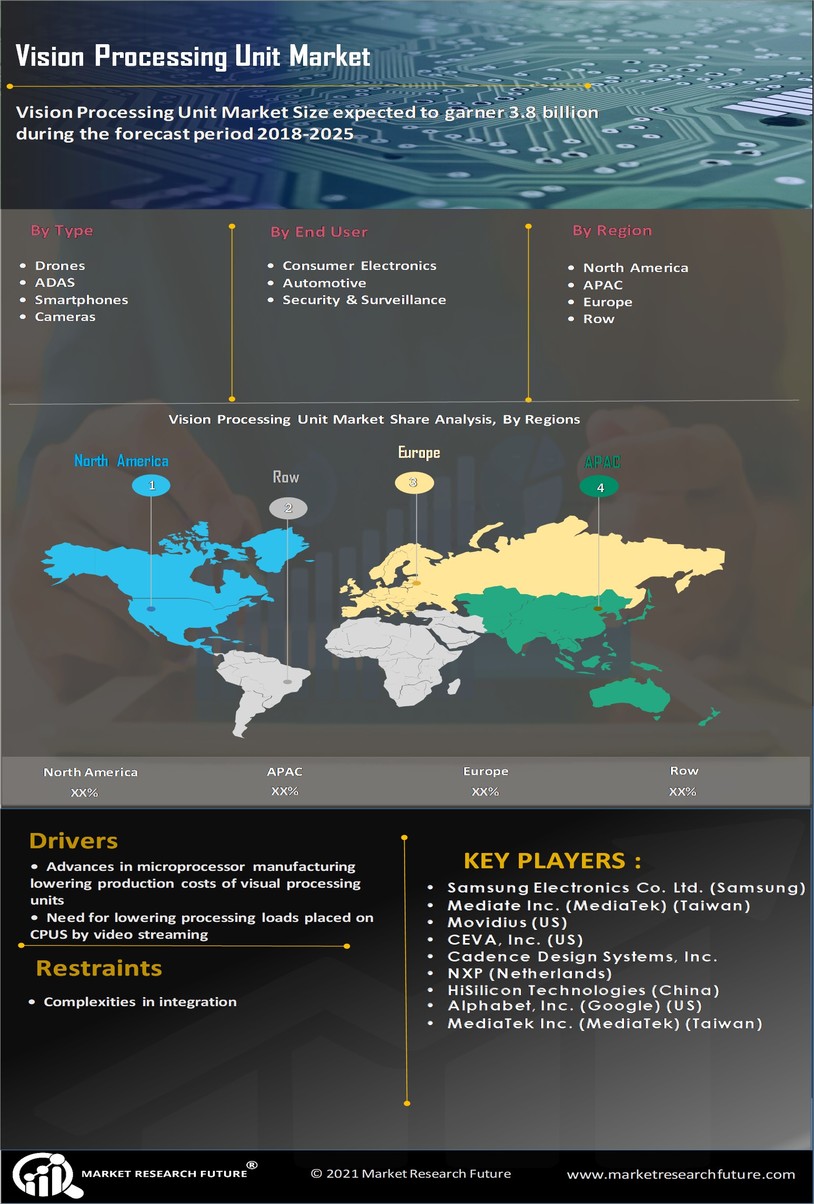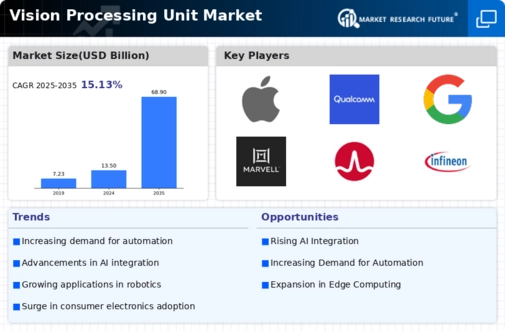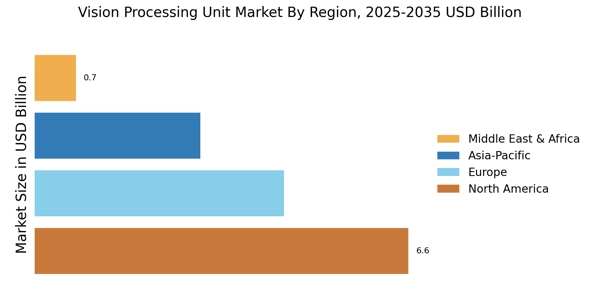Emergence of Edge Computing
The Vision Processing Unit Market is experiencing a transformative shift with the emergence of edge computing, which allows data processing to occur closer to the source of data generation. This trend is particularly relevant for applications requiring low latency and high efficiency, such as video surveillance and industrial automation. By 2025, the edge computing market is anticipated to grow to approximately 30 billion USD, creating new opportunities for vision processing units that can operate effectively at the edge. These units are designed to handle data processing tasks locally, reducing the need for bandwidth and enhancing response times. As industries increasingly adopt edge computing strategies, the Vision Processing Unit Market is likely to expand in tandem, driven by the demand for localized processing capabilities.
Increased Focus on Smart Cities
The Vision Processing Unit Market is benefiting from the growing emphasis on smart city initiatives, which aim to improve urban living through technology. Smart cities leverage advanced technologies, including vision processing units, to enhance public safety, traffic management, and environmental monitoring. In 2025, investments in smart city projects are projected to reach over 200 billion USD, highlighting the potential for vision processing units to contribute to these developments. By enabling real-time data analysis from surveillance cameras and sensors, these units facilitate informed decision-making and resource allocation. As urban areas continue to expand, the Vision Processing Unit Market is likely to see increased demand for solutions that support the infrastructure of smart cities.
Advancements in Autonomous Systems
The Vision Processing Unit Market is significantly influenced by advancements in autonomous systems, particularly in sectors such as transportation and robotics. The development of self-driving vehicles and automated drones necessitates sophisticated vision processing capabilities to interpret and respond to dynamic environments. In 2025, the autonomous vehicle market is expected to surpass 100 billion USD, with vision processing units playing a critical role in ensuring safety and efficiency. These units enable real-time image processing, object detection, and navigation, which are vital for the functionality of autonomous systems. As the demand for automation continues to rise, the Vision Processing Unit Market is poised for substantial growth, driven by the need for enhanced visual perception in these applications.
Rising Demand for AI and Machine Learning
The Vision Processing Unit Market is experiencing a notable surge in demand driven by the increasing integration of artificial intelligence and machine learning technologies across various sectors. As organizations seek to enhance their operational efficiency and decision-making capabilities, the need for advanced processing units that can handle complex algorithms and large datasets becomes paramount. In 2025, the market for AI-related hardware is projected to reach approximately 50 billion USD, indicating a robust growth trajectory. Vision processing units, with their ability to process visual data in real-time, are becoming essential components in AI systems, thereby propelling the Vision Processing Unit Market forward. This trend is likely to continue as more industries recognize the potential of AI-driven solutions.
Growing Interest in Augmented and Virtual Reality
The Vision Processing Unit Market is witnessing a surge in interest due to the rapid development of augmented reality (AR) and virtual reality (VR) technologies. These immersive technologies require high-performance vision processing units to deliver seamless experiences to users. In 2025, the AR and VR market is projected to exceed 50 billion USD, indicating a robust demand for the underlying hardware that supports these applications. Vision processing units are essential for rendering graphics, tracking movements, and processing visual data in real-time, which are critical for the functionality of AR and VR systems. As consumer and enterprise applications for AR and VR continue to evolve, the Vision Processing Unit Market is expected to grow significantly, driven by the need for advanced visual processing capabilities.

















Leave a Comment